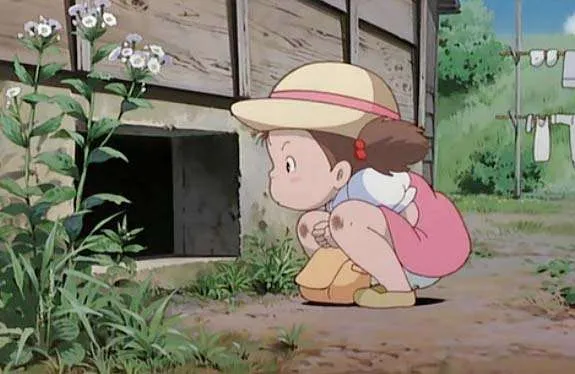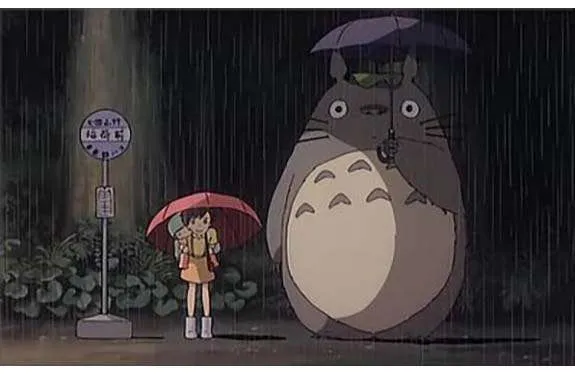My Neighbor Totoro: Honest Face of Nature
Is Totoro your neighbor?
I am not asking a poetic question to test if you still preserve a pure and fresh imagination like Mei, one of the main characters of “My neighbor Totoro.” This widely cute, four year-old girl makes many of us think: “this is how kids used to be back in days.” She is innocent, free and full of energy and undeterred curiosity. She is never afraid of jumping into the heart of nature to find out what’s in there. She expresses her feelings – happy, excited, sad or angry – so directly that she stirs our crude, childish emotions that we usually try to hide.

Naturally, many people think that “My neighbor Totoro” is about the beauty of unbound imagination when free-spirited children face, and venture into, crude nature.
But from a different angle, Totoro is not Mei’s imaginary neighbor. Totoro used be our real neighbor, and it was so by design. Totoro was next to all of us when our “architecture” was a lot more subtle, flexible, ambiguous and yielding to nature. And surprisingly, it was not that long ago.

Humans live and survive surrounded by nature, first by reaping what it provides, and then by protecting themselves from the threats it poses. Nature is something that gives us good things and bad things at the same time. While it is beautiful and a blessing, nature can suddenly become the cruelest beast with deadly fangs. Our ancestors loved and dreaded nature at the same time – it was so powerful and overwhelming in many ways that they had to worship it.
But as humans became civilized and modernized, they invented effective “architecture” to place between nature and humans, to “tame” nature and alter the power balance between the two. “Architecture” included buildings and infrastructure, but could also include any system that fundamentally changed how we relate with nature – such as agriculture or language/science. With a variety of powerful architecture, humans managed to develop ways to separate blessings and threats. We have become smart enough to extract only good things, while aggressively eliminating bad things, so we don’t have to deal with them. We altered the face of nature. We became selective.
Before we knew, the real crude nature receded far away. The “nature” we know today is mostly benign, which brings only good things to humans. And that’s what we sought. We worked hard so as we didn’t have to go back to the days where we had to struggle with food shortages, high mortality rates or things like that. But still, we probably maintain our bonding to raw, unaltered nature, which has both good sides and bad sides.

![]()
“My neighbor Totoro” is very honest with nature. The story includes both the good sides and bad sides of nature. A storm comes with threats of destruction (Satsuki and Mei’s old, wooden house is so rugged that it looks pretty vulnerable in a storm), vegetables came with bugs, and a sunny day would soon be taken over by the dark night. Mei and Satsuki’s mom is sick in the hospital.
This is just my guess, but that is the reason why “cat-bus” looks half scary, and Totoro is so oblivious to what’s going on in the humans’ world. They are honestly part of nature. They are not “cuddly” as modern humans expect nature to be, because Hayao Miyazaki knew that’s not how it works in reality. Instead of making up superficially cute, benign and kind creatures just to please his audience, he chose to be sincere and honest about nature. That’s why Totoro is authentic and does not lose its freshness, after decades since its release. Probably cat-bus could be obnoxious to humans if people tried to treat him bad. Likewise, Totoro would ignore humans if he didn’t feel like taking care of them. Nature is capricious and works outside of a humans’ logic or expectations.

Both cat-bus and Totoro could be a representation of the devices or channels old Japanese used to place in-between them and nature, to better communicate with it. They belong to this ambiguous area in-between nature and humans’ world, and play subtle but critical roles to connect the two. Old architecture would make sure to leave some room for such ambiguities. Shrines were surrounded by thick wood, rice fields were “protected” by small gods made of stone, and houses could be inhibited by some sort of ghosts or spirits. (by the way, all of those examples appear in “My Neighbor Totoro”)
Existences like Totoro is more than just imaginary or superstitions; they were the mediators who could tell people where the fine lines were in order to avoid disturbing nature, or to what extent they could reap its blessings.
In the next post, we will discuss ambiguity and Japanese traditional architecture exhibited in “My Neighbor Totoro,” and how it shaped the way people interacted with nature. Please sing up for our newsletter to receive updates.













